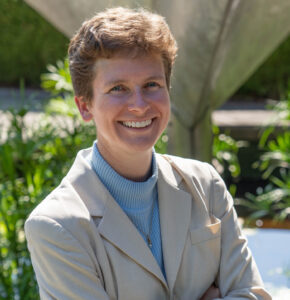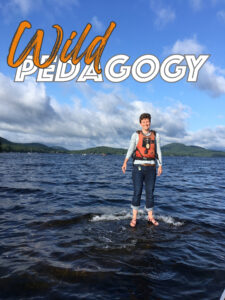
A Change of Pace: Outdoor Assignments
 Sometimes students just need a change of pace. Sometimes their professor needs a break. It’s nice when those two moments coincide. [For more on the power of surprises in the classroom, see Dr. Lynne Westfield’s February blog post]. The rhythm of class, even when it’s an active classroom, becomes routine. Mostly that’s a good thing because students know what to expect, which reduces anxiety and increases openness to learning. But routines can allow sleepiness to creep in, too. What was stability and structure can become a lull as students get too comfortable and start to become passive about their learning. This might be even more the case when the semester speeds up and students have an overwhelming amount of work. They begin to do without thinking and reflecting, or begin not to do at all.
Sometimes students just need a change of pace. Sometimes their professor needs a break. It’s nice when those two moments coincide. [For more on the power of surprises in the classroom, see Dr. Lynne Westfield’s February blog post]. The rhythm of class, even when it’s an active classroom, becomes routine. Mostly that’s a good thing because students know what to expect, which reduces anxiety and increases openness to learning. But routines can allow sleepiness to creep in, too. What was stability and structure can become a lull as students get too comfortable and start to become passive about their learning. This might be even more the case when the semester speeds up and students have an overwhelming amount of work. They begin to do without thinking and reflecting, or begin not to do at all.
On the professor’s side, the structure can be freedom. Limits engender creativity, and having a structure in place to fill in with lively activities and discussions feels like having a place to start. It puts me in a good rhythm with students when we’re all on the same page. But, like the students, the rhythm can become routine. In my case, it’s not a lull as much as a slog. I just keep doing the same thing day after day, week after week, semester after semester. Then the more the students fall into passivity, unwilling to do the work of learning, the more it feels like a slog for me, trying to rouse them to participate in their own lives again. And so I find myself in need of a break. Just a little one, maybe, but something.
Enter outdoor assignments.
Recently I needed to create a lesson that did not need me to facilitate in person, and it went so well that it’s inspired further creativity in imagining where my classroom can be. Wanting to do more than just “work on your presentations” time or another online read-and-write exercise, I paired a hike assignment with our content on the desert saints. The graduate students in this class had read sections of the Life of Antony and the Life of Syncletica as well as a collection of sayings of the desert saints, and they had written summaries and basic analyses of the sources as part of their online work before coming to campus for this in-person weekend. I sent them off to take a hike for an hour, find a space to read some of the sayings until one captured their attention, then ponder it awhile. Then, still outside, they were to complete a reflection on the state of their soul inspired by the work and words of the desert saints. When they were done, they were to write a page about the experience to turn in to me.
It turned out to be a colder-than-average day, so I told them they were welcome to sit by a window and look at creation if they were not up for an actual hike. This is also a way to make the assignment accessible for most abilities. When I received their reflections, students spoke of the gift of space to be quiet and still, to absorb rather than figure out the right answer. They mentioned how much more real the desert saints, their lives, and the logic of their teaching became to them. What began as an attempt for my own survival became a rich and meaningful assignment. My students not only got the fundamental information about the historic desert saints but engaged the material deeply, with layers of comprehension, and further questioned how this material might affect their own lives.
I’m thinking more and more about where I can place an occasional assignment that gets students out of the classroom and learning without my direct intervention on their own or in groups, that is not simply another online assignment. Can they interact with the world and each other? Can they find deeper ways into the material, even ways that resonate somewhere in their core? I send them on a scavenger hunt around campus to find the art of biblical scenes and think about art as interpretation. In classes on monasticism I ask them to go to a cemetery and ponder their mortality as monks do, an idea I stole from my own preaching professor who sent us to a cemetery to begin sermon prep sitting among headstones. I tell them to take a hike.
With good instructions and a thoughtful “product” of some kind, students will learn a great deal (stay tuned for another post about assessing such assignments). In fact, because of the disruption to their routine, students might even learn more as they find energy they’ve been lacking. Bonus: the professor gets an occasional break, too!
Leave a Reply